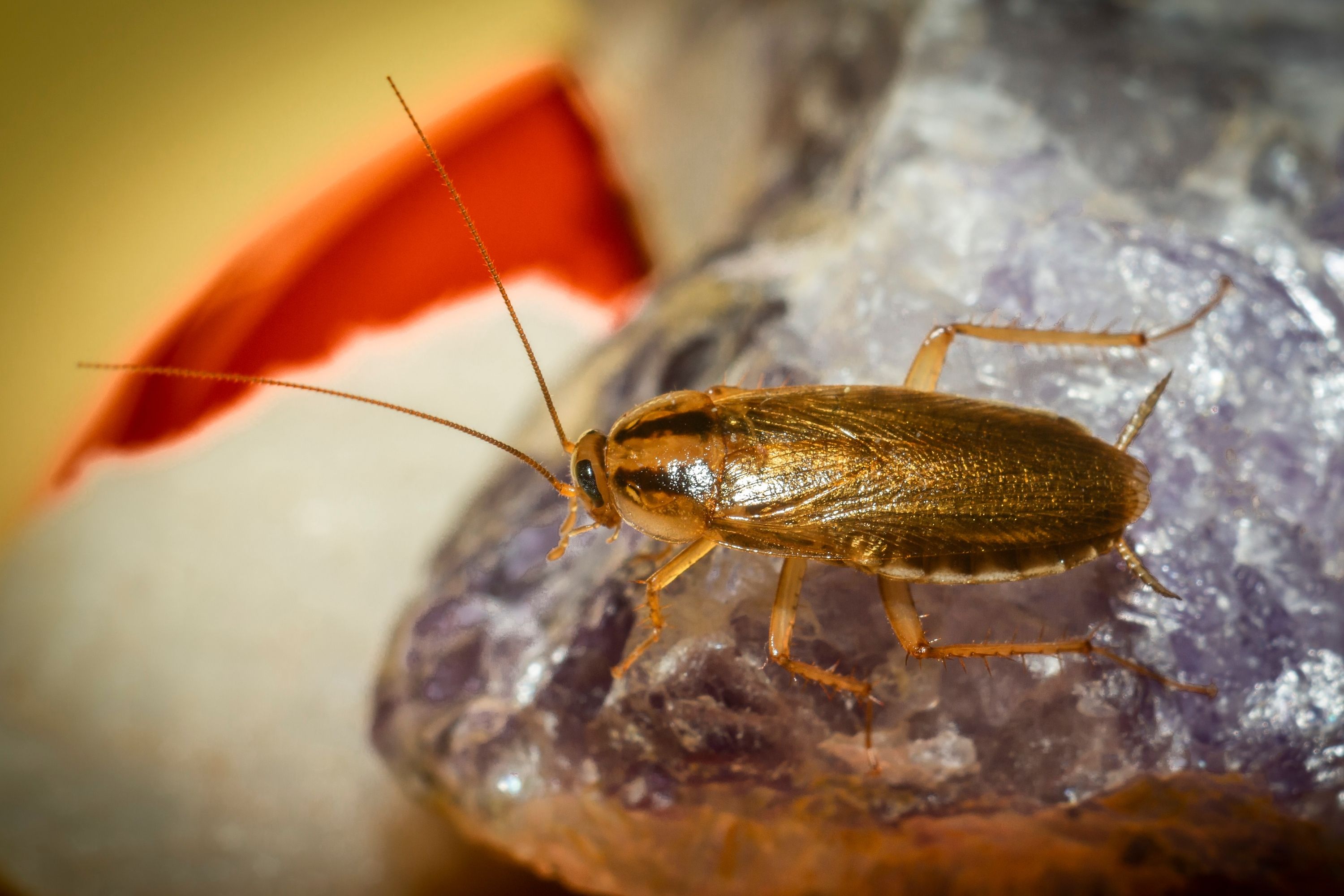German cockroach
(Blattella germanica)

Description
The German cockroach (Blattella germanica), colloquially known as the croton bug, is a species of small cockroach, typically about 1.1 to 1.6 cm (0.43 to 0.63 in) long. In color it varies from tan to almost black, and it has two dark, roughly parallel, streaks on the pronotum running anteroposteriorly from behind the head to the base of the wings. Although B. germanica has wings, it can barely fly, although it may glide when disturbed. Of the few species of cockroach that are domestic pests, it probably is the most widely troublesome example. It is very closely related to the Asian cockroach, and to the casual observer, the two appear nearly identical and may be mistaken for each other. However, the Asian cockroach is attracted to light and can fly like a moth, while the German cockroach cannot. The German cockroach occurs widely in human buildings, but is particularly associated with restaurants, food processing facilities, hotels, and institutional establishments such as nursing homes and hospitals. They can survive outside as well, though they are not commonly found in the wild. In cold climates, they occur only near human dwellings, because they cannot survive severe cold. However, German cockroaches have been found as inquilines ("tenants") of human buildings as far north as Alert, Nunavut. Similarly, they have been found as far south as southern Patagonia. Previously thought to be a native of Europe, the German cockroach later was considered to have emerged from the region of Ethiopia in Northeast Africa, but more recent evidence suggests that it actually originated in Southeast Asia. Whatever the truth of the matter, the cockroach's sensitivity to cold might reflect its origin from such warm climates, and its spread as a domiciliary pest since ancient times has resulted from incidental human transport and shelter. The species now is cosmopolitan in distribution, occurring as a household pest on all continents except Antarctica, and on many major islands, as well. It accordingly has been given various names in the cultures of many regions. Though nocturnal, the German cockroach occasionally appears by day, especially if the population is crowded or has been disturbed. However, sightings are most frequent in the evening, when someone suddenly brings a light into a room deserted after dark, such as a kitchen where they have been scavenging. When excited or frightened, the species emits an unpleasant odor.
Taxonomic tree:







